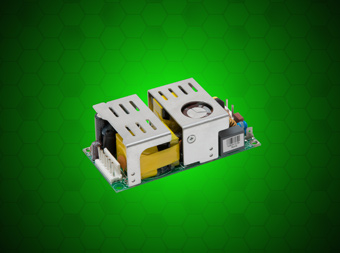The main value proposition for LEDs over traditional lighting is two-fold: Long life expectancy that translates to saving money on replacement costs and higher illumination using less energy to lower electricity bills.
Since LEDs are a solid-state component and require electronic circuits to emit light, a driver that transforms AC to DC current will be utilized in the light fixture and subject to temperatures well above 50°C. This will put thermal stress on components such as electrolytic capacitors in the driver.
If it is not designed efficiently, this could be a detriment to the long life expectancy of the LED fixture, thus reducing the main value proposition of an LED light.
Power supplies with high-power efficiencies, good thermal design, and high-temperature electrolytic capacitors rated at 105°C with over 5,000 hours of life are the critical components in selecting an LED driver. This approach will ensure the minimum life expectancy of 50,000 hours for the LED fixture.
Residential and commercial lighting fixtures have been certified and have carried the Energy Star logo for a number of years. However since 2009 (and updated in 2011), there have been specific requirements added for LED-sourced lighting products. Not all LED light fixtures can apply for the Energy Star program. For example, entertainment lighting is excluded from the list of fixtures that can bear the Energy Star logo.
Requirements to consider include Lumens per Watt, which is a combination of a well designed optical source as well as a highly efficient driver. Also look for a product with a minimum of 35,000 hours of life expectancy that requires both the LED and the driver to be of the highest quality and work reliably during this period. These characteristics are important so that the end-user does not have to worry about replacing the fixture year after year.
The bulk of Energy Star requirements are centered around drivers and include:
- A minimum power factor of 0.7 for residential and 0.9 on commercial lighting products;
- Transient protection circuitry to pass 2.5kV of input surge based on ANSI/IEEE C62.41;
- An operating temperature of -20°C or lower;
- Less than one-second delay from the time AC input voltage is applied till the light comes on; and
- No light standby wattage of less than half a watt. (Note: The standby wattage can be increased to 1 watt if the LED lighting fixture has built-in intelligence.)
To meet a power factor of 0.9, the driver has to have a power factor correction stage, which requires additional components and complexity of design that can be addressed with the electronics designer who has a solid technical background in power conversion and magnetic design.
Inexpensive drivers can claim to meet the power factor requirements at full power, but as loading is dropped through the dimming of the light emitted by the LED, these drivers will have a much lower power factor than 0.9. This will disqualify the fixture from meeting the requirements. Adding metal-oxide varistors (MOVs) is the simplest way to meet transient protection.
Operating at -20°C temperature can be a challenge for a power designer, and not all commercially available power supplies can comply.

The ability to control the illumination based on area occupancy is a growing field in the LED lighting market, as well. There is potential cost reduction by effectively lighting only the path or the area that is being occupied in an office building or parking structure.
Since LEDs are an electronic device, limiting the current can achieve the desired outcome in dimming the light and saving energy and cost. In some applications, both wired and wireless control systems are taking advantage of existing infrastructure developed for networking schemes.
Moreover LED drivers are built to have embedded IP addressing in order to interface with an electronic console to accept commands and change the light intensity based on the occupancy sensing and other parameters. They can also report dynamic information (such as ambient temperature) back to the controlling console.
This is an opportunity for the manufacturer of LED drivers to influence lighting design in the early stages by providing flexibility in sensing and reporting critical information via wired or wireless antennas and receivers. With new technology, this can also be done via the AC line.
The communication protocol is varied by application-specific LED fixtures. Area lighting uses DALI commands, whereas in entertainment lighting, DMX-512 is widely employed. Remote Device Monitoring (RDM) is the next step up for wireless control in architectural lighting.
No matter what the protocol is, an intelligent driver will be the future for powering LED light fixtures.
By Maggie Nadjmi, product manager at SL Power Electronics.
Photos (top to bottom): Rite Lite Signs, SL Power Electronics.











